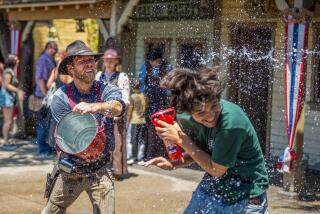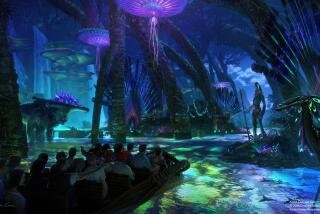It’s time to rethink theme parks. Creative ways to reopen while social distancing
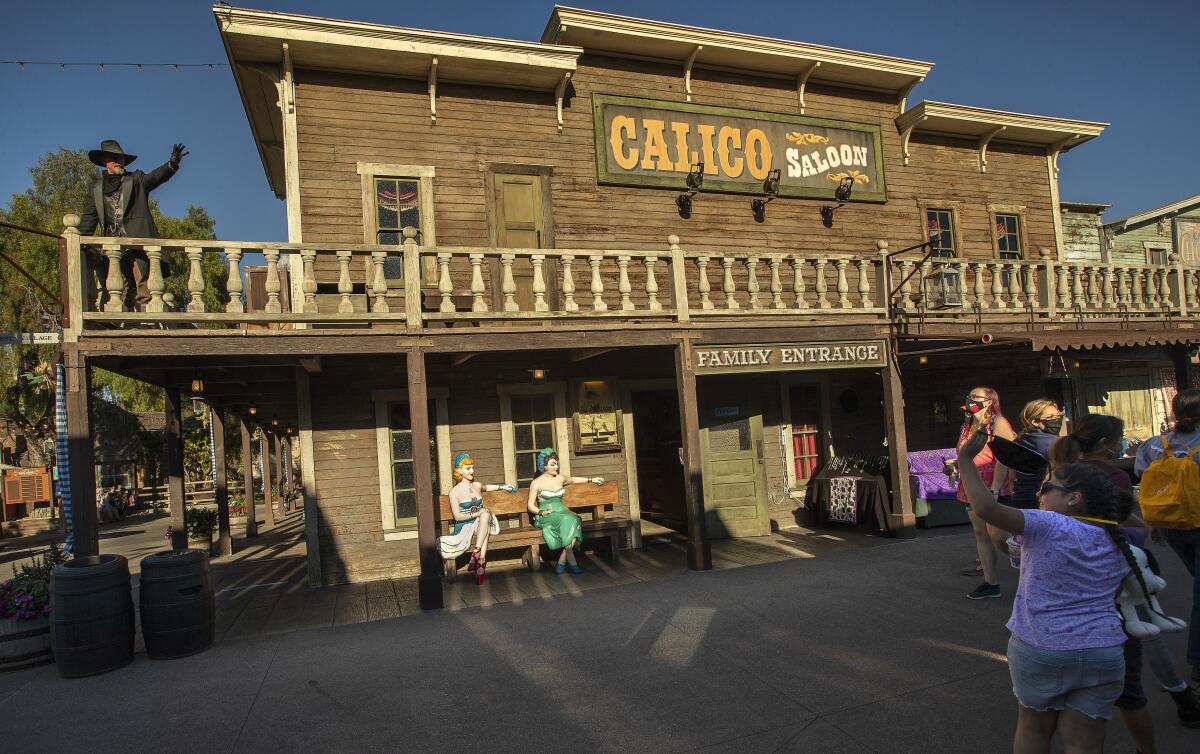
- Share via
Knott’s Berry Farm last week felt more like a national park than a theme park. Reopening for a Knott’s-designed food event dubbed Taste of Calico, the park‘s famed ghost town was clear for roaming on an early Friday afternoon. And though there was an air of trepidation among the guests seeking boysenberry-fueled delectables, maintaining at least 10 or 15 feet distance from another human was relatively easy — just the way this pandemic-wary mind likes it.
Western characters traversed the second story of the ghost town’s frontier buildings, keeping alive from a distance the theme park’s pre-pandemic tomfoolery — including the shock and concern expressed at the very sight of any piece of modern technology held by a guest.
In Florida, theme parks from Disney and Universal have reopened to much debate and health-related concerns amid still raging COVID-19 numbers, while our Los Angeles and Orange County theme parks remain on pause. Knott’s, unable to offer any rides, attractions or shows during its 100th year, has essentially shape-shifted into a large alfresco dining locale. The carved rocks and perfectly centered waterfalls of the Calico Mine Ride provided, at long last, a bit of nature to this dweller of downtown Los Angeles, where my surrounding streets are still overcrowded with the unmasked.
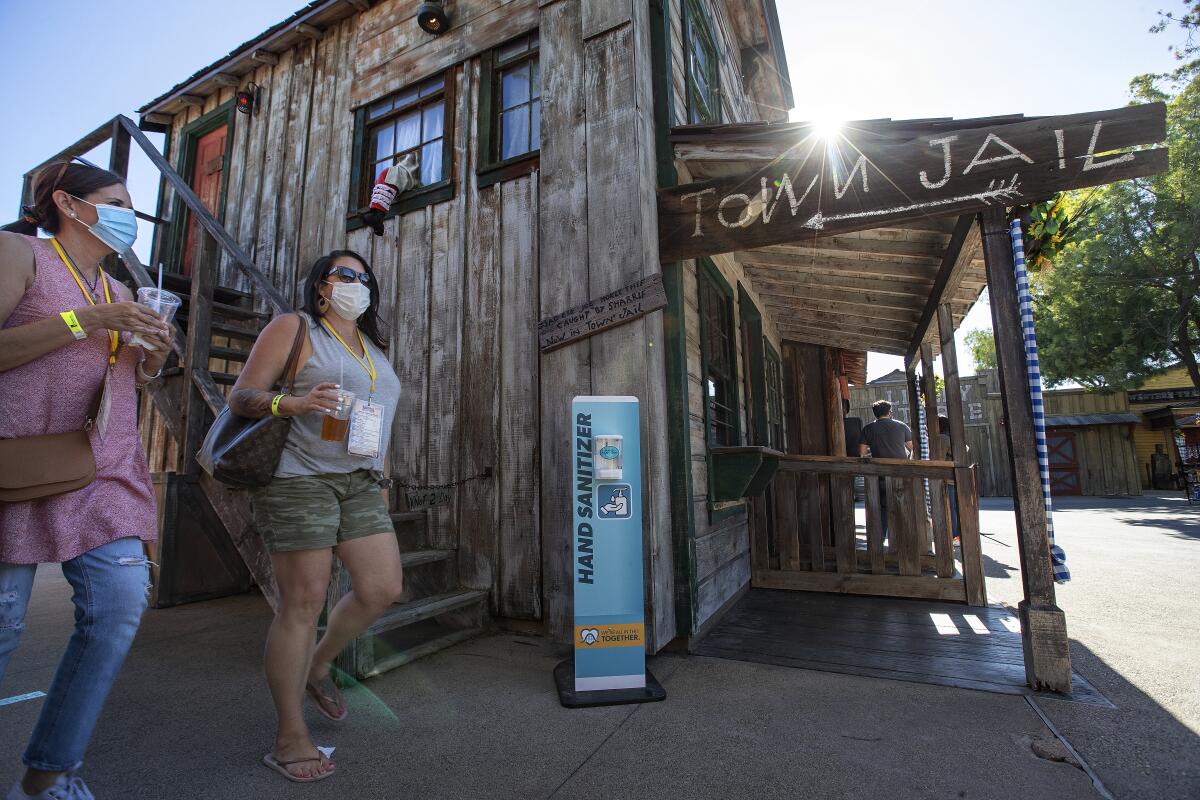
When Universal Orlando and Walt Disney World parks reopened in recent weeks, much of the focus, as it was when international parks returned to business, was on social distancing markers, Plexiglas, temperature checks and even some creative use of characters — where they are seen amid the park’s surroundings rather than mingling with guests.
Health, right now, is the primary concern, but it seems increasingly apparent that the effects of 2020 will be with us for some time to come, even if we receive good news on COVID-19 treatments or technology that allows us to quickly screen for the virus.
COVID-19 put a pause on Meow Wolf’s most ambitious, risk-taking and topical endeavor yet: the grocery store-inspired Omega Mart, planned for Las Vegas.
In turn, the near future of theme parks experiences could begin to look very different. There is already a very real financial toll with the constant threat of furloughs and layoffs — Universal parent Comcast reported another round of theme park cuts in its recent earnings report — and upcoming projects are being delayed and reevaluated, with some no doubt at risk of being canceled altogether. With uncertainties surrounding travel and the long-term spending power of consumers, large investments in infrastructure will have to wait.
And yet there are still creative opportunities to be had. Knott’s Taste of Calico, for instance, is expanding on weekends beginning Aug. 21 as the Taste of Knott’s to use more of the park.
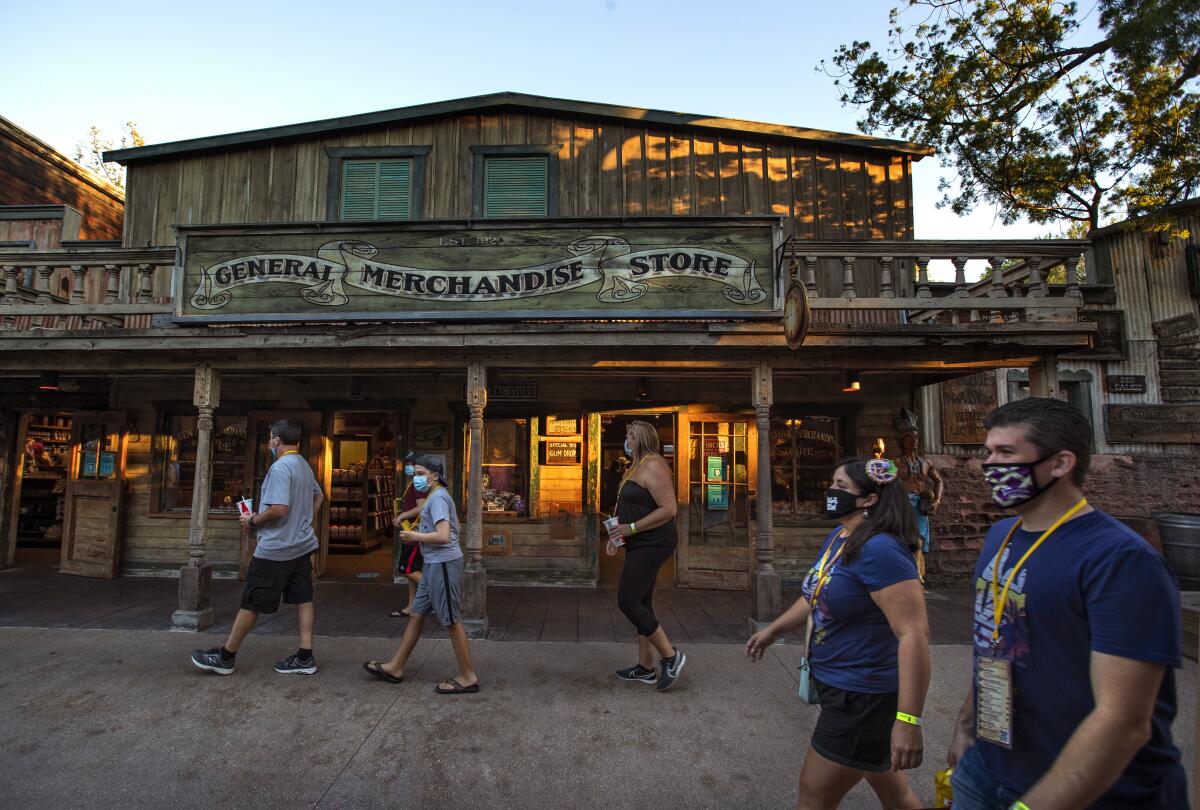
It’s easy to imagine many areas of a theme park resort being refashioned into a special-event space. I’ve been holding out hope that the outdoor grounds of the Disneyland Hotel would be utilized for a food and drink event featuring the talents of the staff at its tiki bar Trader Sam’s.
But this is also a chance to re-imagine the theme park space, to view the entire grounds as something akin to a game board. Those who have been to Walt Disney World’s Magic Kingdom or used the Play Disney Parks app at Galaxy’s Edge have seen how games such as “Sorcerers of the Magic Kingdom” and the Star Wars: Datapad can be used to keep crowds moving and get people to interact with areas of the park beyond a ride or a shop.
Over the years there have been other experiments, the live-action, role-playing game “Legends of Frontierland” or Disneyland’s Adventureland Trading Company, which provided physical rewards for light scavenger hunting. It also succeeded in getting me to spend more than half of a day in Adventureland, keeping me out of lines and looking at an area of Disneyland in a new light, the exact sort of activities that are significantly more appealing than indoor ride vehicles in an era of social distancing.
COVID-19 put a pause on Meow Wolf’s most ambitious, risk-taking and topical endeavor yet: the grocery store-inspired Omega Mart, planned for Las Vegas.
Taking it further was the elaborately designed Haunted Mansion: Ghost Post, a 2016 subscription box that enabled fans of the classic Disney attraction to not only interact with the narrative at home but allowed them to rethink how they viewed the park, even extending to in-park interactions that were exclusive to subscribers. While the box sold out more quickly than I was able to purchase it, a similar product for, say, Galaxy’s Edge, seems a no-brainer. The “Star Wars” universe is ripe for mysteries, and the socially distant power of the Force or small hologram-like transmissions seem destined for theme park illusions that have yet to fully materialize.
Expect the cornonavirus era, say theme park experts, to accelerate a play-driven evolution that has steadily been increasing in parks — in part because they naturally lead to exploration, but also because they appeal to locals and regular park-goers, a demographic that’s more vital than ever if plane travel continues to dip.
At long last, says Susan Bonds, a former creative with Walt Disney Imagineering and the chief executive officer of 42 Entertainment, which has specialized in branded augmented-reality experiences, such game-like ideas will probably meet with a more receptive executive audience.
Bonds, for instance, is bullish on augmented reality, and a 65-year-old institution such as Disneyland offers opportunities for digital overlays that are both game-focused or historical. I tell her I’ve long dreamed of a “Pokémon Go”-style game that had vastly different interactions in a Universal or Disney park than it did at home.
“There is a lot of low-hanging fruit, and there hasn’t been an impetus,” Bonds says. “Now, this is that moment.
“Gaming,” she adds, “is the DNA of life now.”
It’s already starting to happen. Experiential design firm Meow Wolf, for instance, home to the popular House of Eternal Return in Santa Fe, N.M., and soon a space in Las Vegas, is working on a full augmented reality app that will provide interactions beyond the company’s physical spaces. The goal is to provide not just game-like quests to explore at home, but also pop-up events or partnerships with other art spaces in cities where Meow Wolf doesn’t have a flagship location.
First, however, will be some more immediate changes to Meow Wolf’s themed Santa Fe environment. Story elements that were previously found in high-touch books or proprietary newspapers will be transferred to an app, and the art collective turned themed entertainment business is developing its own branded hand sanitizer, Liquid Gauntlet Germ Ghoster. Expect too an increase in live performers, who will be utilized to entertain and prod socially distant groups through the space in a way that alleviates bottlenecks.
This is our new reality, so it’s time, says Meow Wolf co-founder Emily Montoya, to accept that health and safety procedures should be a part of our fantasy worlds rather than an intrusion in them.
“Our question is how do we maintain those types of safety and sanitation practices without taking people out of the other world, out of the experience,” she says. “How do we fully integrate an automatic hand sanitizer? It’s transformed into an art object.”
More to Read
The biggest entertainment stories
Get our big stories about Hollywood, film, television, music, arts, culture and more right in your inbox as soon as they publish.
You may occasionally receive promotional content from the Los Angeles Times.

